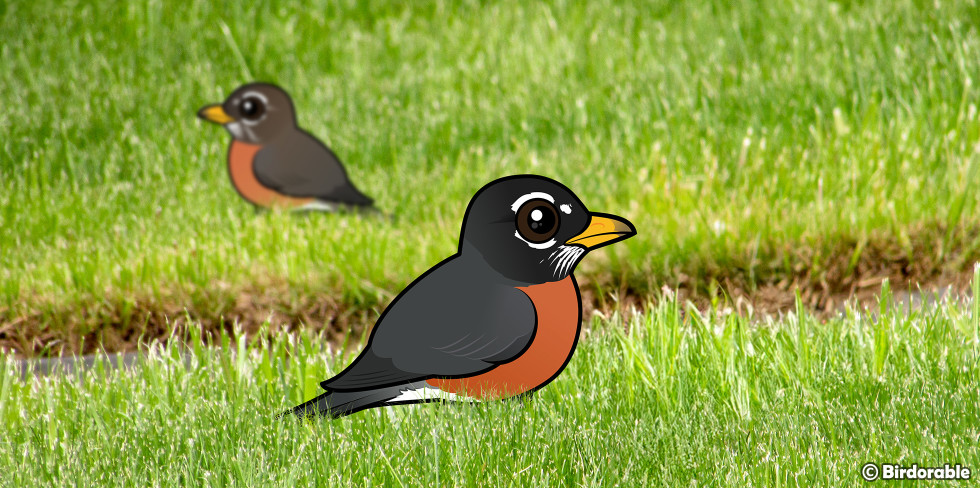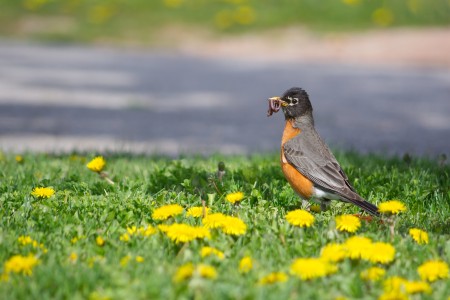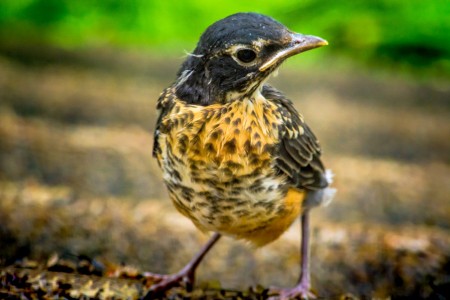American Robin Fun Facts: Learn About Its Habits and Habitat

The American Robin is one of the most familiar and beloved birds across North America. With its bright orange belly and cheerful song, it's easily recognized by both sight and sound. Let's dive into some intriguing facts about the American Robin that may surprise even seasoned bird enthusiasts.
Modified Migration Movements
Not all American Robins migrate, but those breeding in the colder northern regions travel south for the winter, sometimes forming large flocks during migration.
Migration In Their Name
One thing about migration that relates to all American Robins is found in their Latin name: Turdus migratorius. Turdus refers to the robin's family of birds: Thrush. Migratorius means "to migrate".
Sign of Spring -- or Fall?
Even in places where American Robins remain year-round, their cheerful spring songs make them a sign of spring in some northern locations. For us here in Florida, the appearance of robins in early November coincides with thoughts of winter

American Robin with worm by Enoch Leung (CC BY-SA 2.0 Deed)
Not Just Worms
American Robins eat a diverse diet. During spring and summer, they mainly eat earthworms and insects, while in colder months, they switch to fruits and berries. They hunt earthworms by watching the ground with cocked heads and then pouncing on prey with their bills once a worm is detected. This familiar and endearing behavior is fun to watch -- a lawn or field full of feeding robins is a sign of a healthy environment. During the winter, robins may gather in large chattering flocks, feeding on berries in trees.
No Relation
Despite the name, American Robins are not closely related to European Robins. They share a similar look in that both species have a recognizable reddish breast. Early European settlers gave the American Robin a similar name to their familiar bird from back home. American Robins are in the thrush family, while European Robins are flycatchers. For the same reason, there are other "robins" in the world that aren't related to either species at all -- like the Rose Robin of Australia.
Ubiquitous Presence
American Robins are familiar birds for a reason: they are highly adaptable to both wild and urban environments. They can be commonly found across a wide variety of habitats, like forests, parks, and residential areas, across North America.

Young American Robin by James Mann (CC BY 2.0 Deed)
A Fresh Look
Young American Robins do not resemble adults until they molt; they sport a speckled breast rather than the iconic red one, which helps in camouflage from predators.
Subtle Differences
There are seven recognized subspecies of American Robin. The subspecies ranges overlap and they breed together; the subspecies are weakly defined. The subspecies are: Eastern Robin; Newfoundland Robin; Southern Robin; Northwestern Robin; Western Robin; Mexican Robin; and the San Lucas Robin, which has been recognized by some taxonomical authorities as a separate species.
Ecological Importance
As predators, American Robins help control insect populations. As prey, robins support local food webs. Additionally, their droppings help in seed dispersal, aiding in plant biodiversity. American Robins can serve as indicators of ecological health in their habitats.
Longevity
While many -- up to 25% through November -- may not survive their first year, once past that milestone, American Robins can live quite long. The longest known lifespan of an American Robin in the wild, known from bird banding records, is nearly 14 years.
Brood Bonanza
American Robins are capable of producing up to three broods in one year. Two broods is typical; a third brood usually occurs following the failure of an earlier attempt. This high reproductive rate compensates for the high rate of chick mortality.
Popular Icon
The American Robin is the state bird of Connecticut, Michigan, and Wisconsin, reflecting its iconic status and importance in American culture.













Comments
Leave a comment
Thank you!